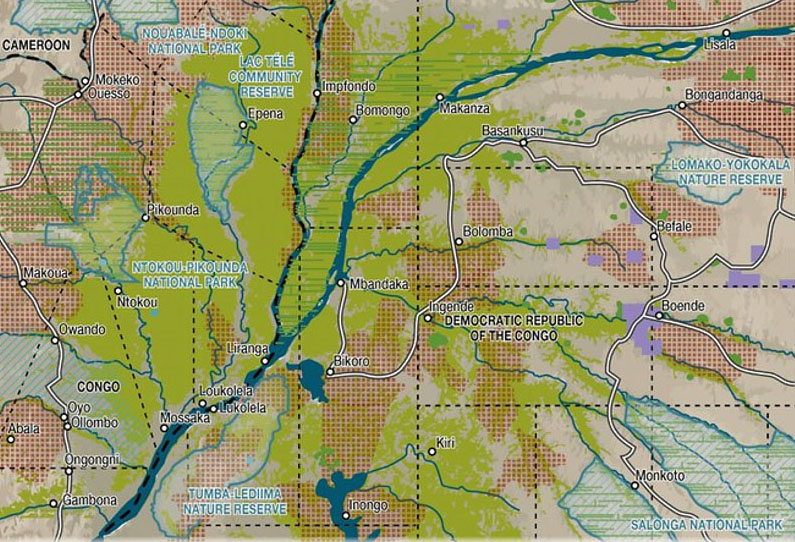
Previously unrecognized, the Congo Basin’s Cuvette Centrale is now seen as an important carbon sink and the world’s largest undisturbed tropical peatland. Safeguarding this newfound treasure means actors on both sides of the border between the Democratic Republic of the Congo (DRC) and the Republic of the Congo (RoC) will need to work together to anticipate threats and govern proactively.
The Cuvette Centrale has always been known as a biodiversity hotspot. Its wetlands contain the first transnational Ramsar Site and are home to iconic species such as lowland gorillas and forest elephants. It also supports 11.1 million human inhabitants, most of whom rely on the rich natural resources for their livelihoods, according to a new brief from the Center for International Forestry Research and World Agroforestry (CIFOR-ICRAF).
However, it wasn’t until 2017 that a landmark study identified a significant amount of peat — a layer of partially decayed organic matter — in the wetlands. This discovery is heralded as one of “the key events of the decade for wetlands conservation,” according to the brief. Today, CIFOR-ICRAF is supporting its DRC colleagues in mapping the peatlands beyond the Cuvette Centrale. Their latest brief identifies key recommendations for governance cooperation between the two countries who share the peatland.
